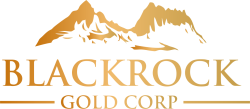 Wall Street brokerages expect that Home Bancorp (NASDAQ:HBCP) will report earnings per share (EPS) of $0.88 for the current fiscal quarter, according to Zacks Investment Research. Two analysts have provided estimates for Home Bancorp’s earnings. The lowest EPS estimate is $0.86 and the highest is $0.89. Home Bancorp reported earnings per share of $0.66 in the same quarter last year, which indicates a positive year over year growth rate of 33.3%. The company is expected to announce its next earnings results on Tuesday, July 24th.
Wall Street brokerages expect that Home Bancorp (NASDAQ:HBCP) will report earnings per share (EPS) of $0.88 for the current fiscal quarter, according to Zacks Investment Research. Two analysts have provided estimates for Home Bancorp’s earnings. The lowest EPS estimate is $0.86 and the highest is $0.89. Home Bancorp reported earnings per share of $0.66 in the same quarter last year, which indicates a positive year over year growth rate of 33.3%. The company is expected to announce its next earnings results on Tuesday, July 24th.
According to Zacks, analysts expect that Home Bancorp will report full-year earnings of $3.50 per share for the current financial year, with EPS estimates ranging from $3.45 to $3.55. For the next fiscal year, analysts expect that the business will post earnings of $3.47 per share, with EPS estimates ranging from $3.40 to $3.54. Zacks Investment Research’s EPS calculations are a mean average based on a survey of sell-side research analysts that that provide coverage for Home Bancorp.
Get Home Bancorp alerts:Home Bancorp (NASDAQ:HBCP) last issued its earnings results on Tuesday, April 24th. The bank reported $0.88 earnings per share (EPS) for the quarter, beating the consensus estimate of $0.71 by $0.17. The company had revenue of $25.99 million for the quarter, compared to analyst estimates of $25.03 million. Home Bancorp had a net margin of 21.91% and a return on equity of 10.11%.
Several research analysts have recently issued reports on the stock. Zacks Investment Research lowered shares of Home Bancorp from a “hold” rating to a “sell” rating in a research note on Thursday, April 26th. Sandler O’Neill set a $48.00 price target on shares of Home Bancorp and gave the company a “hold” rating in a research report on Tuesday, April 24th. ValuEngine downgraded shares of Home Bancorp from a “buy” rating to a “hold” rating in a research report on Wednesday, May 2nd. Finally, BidaskClub upgraded shares of Home Bancorp from a “sell” rating to a “hold” rating in a research report on Friday, February 2nd. One equities research analyst has rated the stock with a sell rating, four have given a hold rating and one has assigned a buy rating to the company. Home Bancorp presently has a consensus rating of “Hold” and a consensus price target of $48.00.
Shares of NASDAQ HBCP traded down $0.22 during mid-day trading on Wednesday, hitting $44.57. The company’s stock had a trading volume of 23,639 shares, compared to its average volume of 22,908. The firm has a market capitalization of $419.82 million, a PE ratio of 16.09 and a beta of 0.11. The company has a current ratio of 0.96, a quick ratio of 0.96 and a debt-to-equity ratio of 0.24. Home Bancorp has a one year low of $34.12 and a one year high of $47.20.
The company also recently declared a quarterly dividend, which was paid on Friday, May 18th. Investors of record on Monday, May 7th were given a $0.17 dividend. This represents a $0.68 dividend on an annualized basis and a dividend yield of 1.53%. This is an increase from Home Bancorp’s previous quarterly dividend of $0.15. The ex-dividend date of this dividend was Friday, May 4th. Home Bancorp’s dividend payout ratio (DPR) is currently 24.55%.
In related news, EVP Darren E. Guidry sold 4,607 shares of the stock in a transaction that occurred on Wednesday, March 14th. The shares were sold at an average price of $43.34, for a total value of $199,667.38. The sale was disclosed in a filing with the SEC, which can be accessed through this link. Company insiders own 13.20% of the company’s stock.
Hedge funds have recently made changes to their positions in the business. Ramsey Quantitative Systems acquired a new stake in Home Bancorp during the 4th quarter worth approximately $131,000. MetLife Investment Advisors LLC acquired a new stake in Home Bancorp during the 4th quarter worth approximately $133,000. Bank of Montreal Can acquired a new stake in Home Bancorp during the 4th quarter worth approximately $148,000. Smith Asset Management Group LP acquired a new stake in Home Bancorp during the 4th quarter worth approximately $204,000. Finally, Wells Fargo & Company MN raised its holdings in Home Bancorp by 51.9% during the 3rd quarter. Wells Fargo & Company MN now owns 6,741 shares of the bank’s stock worth $282,000 after buying an additional 2,303 shares during the period. Hedge funds and other institutional investors own 37.06% of the company’s stock.
Home Bancorp Company Profile
Home Bancorp, Inc operates as the holding company for Home Bank, National Association that provides various banking products and services in Louisiana. It offers deposits products, including interest-bearing and noninterest-bearing checking, money market, savings, and certificates of deposit accounts.
Get a free copy of the Zacks research report on Home Bancorp (HBCP)
For more information about research offerings from Zacks Investment Research, visit Zacks.com

 Tesla��s Elon Musk announces new high-performance Model 3 for $78,000
Tesla��s Elon Musk announces new high-performance Model 3 for $78,000  Money Milestones: This is how your finances should look in your 30s
Money Milestones: This is how your finances should look in your 30s  All the ways you can mess up your 401(k) �� even if you max out your contributions
All the ways you can mess up your 401(k) �� even if you max out your contributions  Surprising strategies to avoid the alternative minimum tax under the new tax law
Surprising strategies to avoid the alternative minimum tax under the new tax law  Here's how indoor farming can help feed 9.1 billion people by 2050
Here's how indoor farming can help feed 9.1 billion people by 2050  Sara Sjolin
Sara Sjolin 
